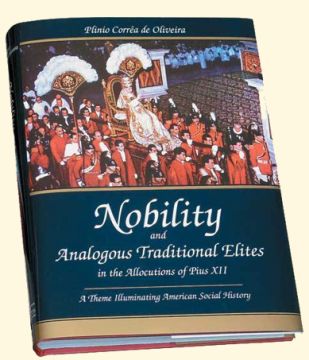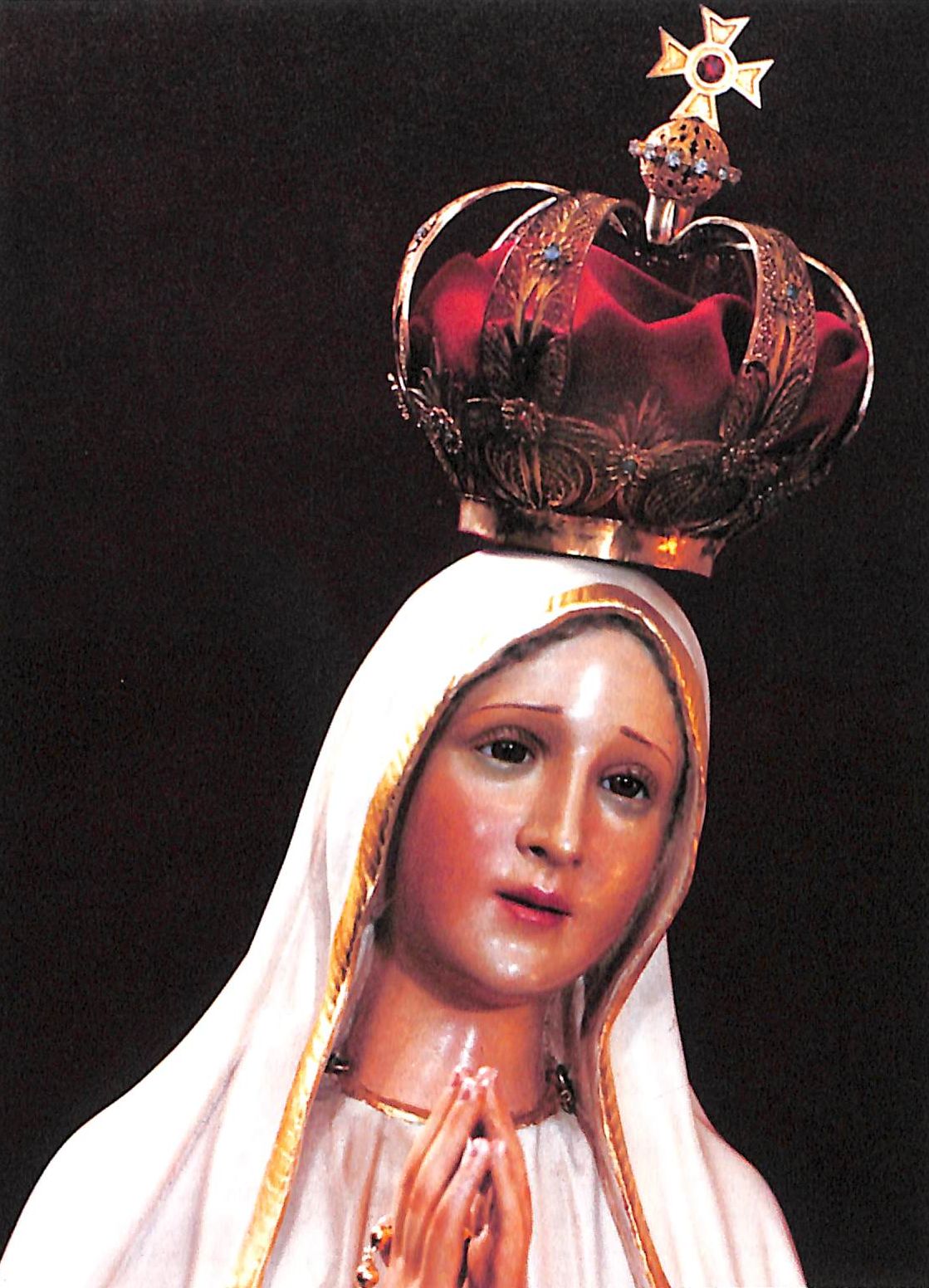|
Plinio Corrêa de Oliveira
Conclusion
|
|
|
Despite the stupendous vitality the European peoples displayed in facing the havoc wreaked by the two world wars, one must admit that the reconstruction in the aftermath of the last conflict demanded considerable effort and much time. Throughout the period when Pius XII pronounced his allocutions to the Roman Patriciate and Nobility (1940-1958), the postwar economic recovery of Europe was progressing slowly. The Pontiff’s paternal concern naturally led him to make many references to this critical situation in these memorable allocutions. In the following decade, however, the rate of the economic recovery increased appreciably, resulting in famous “economic miracles” like the “German miracle” and the “Italian miracle.” This series of “miracles” has not ended. The present economic prosperity of Spain and Portugal—little-favored nations until now—can still be somehow included in it. This surge of prosperity—the apogee of which Pius XII (who died in 1958) did not see, but to which the Conciliar constitution Gaudium et Spes sang a hymn of salutation and joy in 1965—noticeably modified the European scene. History will one day give a detailed account of the role played by the nobility and other traditional elites in this recovery. This account will perhaps permit an assessment of the repercussion of Pius XII’s notable directives on the conduct of these classes as they helped in Europe’s economic recovery. Without venturing a precise judgment, it seems that this role was considerable, albeit proportional to the means of action available to the aristocracy and the elites of each country. One thing is certain. When the tragic extent of the failure of state capitalism and the dictatorship of the proletariat in Soviet Russia and Eastern Europe began to be patent in 1989, the western European countries, the United States, and other nations promptly sent enormous sums to their aid—for which little or no repayment may be expected. Thus did the great democratic nations, oriented and enriched by free enterprise, implicitly show mankind the triumphant contrast between West and East. Nevertheless, how mistaken are those who imagine that this reacquired prosperity solved the crises inherited by the Western nations in previous decades and worsened by new factors. The misconception that prosperity is always the mainstay of the order and well-being of nations, and that poverty is the principal cause of crises is clearly disproved by events in postwar Europe. The process of healing and reflourishing on the Old Continent was well advanced in 1968 when the terrible Sorbonne crisis erupted. This crisis revealed the tumultuous and destructive influence on the youth of philosophies previously considered extravagant manifestations of certain “beautiful people” in cultural and worldly circles. The extensive reverberations of the Sorbonne phenomenon among avant-garde youth in Europe and elsewhere revealed the depth of this opened chasm. The general deterioration of customs, already deplored by Pius XII, found favorable grounds in this milieu of wealth and extravagance, prompting a moral and cultural crisis that plunged the free world into a situation that was graver than previous crises, which had been merely or predominantly economic. The spreading of prosperity was rightly seen by lucid and well-documented observers as an important factor in this tragic worsening of the moral crisis.158 This situation was exacerbated by a crisis of totally unprecedented magnitude that afflicts the Catholic Church, the pillar and foundation of morality and the good order of society.159 Two important events subsequently influenced these perspectives: the Gulf War and the victorious stand of the Baltic peoples—notably the glorious resistance of the heroic Lithuanian people—in favor of their independence. It would be a serious error to underestimate the importance of this latter event. Involving fundamental principles of morality and international order, it caused a just and emphatic disturbance in the conscience of peoples, as was shown by the brilliant petition drive promoted by the TFPs in 26 countries, which attained the impressive total of 5,218,520 signatures.160 * * *
May Our Lady of Fatima, the special patroness of this agitated contemporary world, help the nobility and like elites to heed the wise teaching Pius XII bequeathed them. As this work draws to a close, grave unknowns beset mankind. The world situation described by Pius XII has changed considerably, mainly thanks to the economic improvement resulting from Europe’s aforementioned “miracles.” Since then, however, two great crises have become more pronounced. One is the internal crisis in the former empire behind the Iron Curtain; the other is the crisis within the Catholic Church. This latter painful crisis is related to the very essence of the issues discussed herein. We nevertheless will refrain from analyzing it, for its gravity and amplitude would demand a separate work, probably of many volumes. The general features of the former crisis are well known throughout the world. At the moment of this writing, the nations that constituted the U.S.S.R. have separated. Frictions among them are increasing, deepened as they are by the fact that some of these nations have the means to unleash an atomic war. It is not improbable that an armed conflict within the former U.S.S.R. would lead to the involvement of major Western nations, with consequences of apocalyptic dimension. One of these consequences could easily be the migration of entire populations pressed by fear of war and actual famine to Central and Western Europe. This migration could assume a critical character of unpredictable scope. What effects would this exodus have on nations until recently under Soviet domination, such as those on the Baltic Sea? What effects would it have on other countries, such as Poland, the Czech Republic, Slovakia, Hungary, Rumania, and Bulgaria, about which it would be very daring to affirm that they have entirely escaped the communist yoke? To complete this panorama, we should consider the possible reaction of the Maghreb in face of a Western Europe enmeshed in problems of this magnitude, as well as developments throughout northern Africa and the profound impact of the immense fundamentalist wave sweeping the peoples of Islam, of which the Maghreb is an integral part. Who can predict with certainty the extremes to which these factors of instability will bring the world, and especially the Christian world? For the time being, the latter is not engulfed in the triple drama of a seemingly peaceful invasion from the East, a probably less peaceful invasion from Africa, and an eventual worldwide conflagration. However, the fatal outcome of the long revolutionary process whose outline was summarized in the last chapter of this work is already within sight. This process has advanced relentlessly, from the waning and fall of the Middle Ages to the initial joyful triumphs of the Renaissance; to the religious revolution of Protestantism, which remotely began to foment and prepare the French Revolution and, even more remotely, the Russian Revolution of 1917. So invariably victorious has been its path despite uncountable obstacles that one might consider the power that moved this process invincible and its results definitive. These results seem definitive indeed if one overlooks the nature of this process. At first glance it seems eminently constructive, since it successively raised three edifices: the Protestant Pseudo-Reformation, the liberal-democratic republic, and the Soviet socialist republic. The true nature of this process, however, is essentially destructive. It is Destruction itself. It toppled the faltering Middle Ages, the vanishing Ancien Régime, and the apoplectic, frenetic, and turbulent bourgeois world. Under its pressure the former U.S.S.R. lies in ruins—sinister, mysterious, and rotten like a fruit long-since fallen from the branch. Hic et nunc, is it not true that the milestones of this process are but ruins? And what is the most recent ruin generating but a general confusion that constantly threatens imminent and contradictory catastrophes, which disintegrate before falling upon the world, thus begetting prospects of new catastrophes even more imminent and contradictory. These may vanish in turn, only to give way to new monsters. Or they may become frightful realities, like the migration of Slavic hordes from the East to the West, or Moslem hordes from the South to the North. Who knows? Will this actually happen? Will this be all? Will it be even worse than this? Such a picture would discourage all men who lack Faith. Those with Faith, however, can already hear a voice coming from beyond this confused and grim horizon. The voice, capable of inspiring the most encouraging confidence, says: “Finally, my Immaculate Heart will triumph!”161 What credit can be placed in this voice? The answer, which it gives, is but a sentence long: “I am from heaven.”162 So there are reasons for hope. Hope for what? For the help of Providence in any work performed with vision, rigor, and method to defend the world from the threats hanging over mankind like so many swords of Damocles. It behooves us, then, to pray, confide in Providence, and act. To develop this action, it is fitting to remind the nobility and analogous elites of their special and, indeed, primordial mission in the present circumstances. May Our Lady of Fatima, the special patroness of this agitated contemporary world, help the nobility and like elites to heed the wise teachings Pius XII bequeathed them. These teachings direct them to a task that Pope Benedict XV had expressively termed the “priesthood” of the nobility.163 Should they dedicate themselves entirely to this extraordinary task, they and their descendants will one day be amazed at the vastness of the results they will have obtained for their respective countries, for mankind, and, above all, for the Holy Catholic Church. Footnotes: (158) TFP-Covadonga’s España, anestesiada sin percibirlo, amordazada sin quererlo, extraviada sin saberlo: La obra del PSOE (Madrid: Editorial Fernando III El Santo, 1988), pp. 109-113, described the phenomenon as it happened in Spain. Summaries of this book were published in several languages by other TFPs. (159) See Chapter I, 4. (160) On December 4, 1990, a delegation of eleven members from various TFPs, led by Dr. Caio V. Xavier da Silveira, Director of the TFP Bureau in Paris, went to Vilnius, the capital of Lithuania, to deliver personally the microfilms of these signatures to President Vytautas Landsbergis. Going on to Moscow, the delegation delivered a letter in the Kremlin offices of Mikhail Gorbachev on December 11. The letter stated: “In the name of over five million signers, we formally ask you to remove all the obstacles to Lithuania’s total independence. World public opinion and History will be grateful for this action.” (161) Words of Our Lady at Fatima in the apparition of July 13, 1917 (Memórias da Irmã Lúcia, 3d ed. [Fatima, Portugal: Postulação, 1978], p. 150). (162) Ibid. p. 146 (163) See Chapter VII, 8 d. Next |
|


